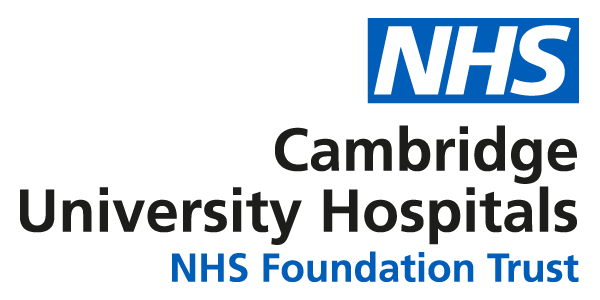This leaflet has been designed to provide information relating to your child’s plan of care as a patient at this hospital.
Signs and symptoms
Your child’s cyst will present as a small pinkish red lump along his/her top or bottom eyelash margin which feels like a pea inside the lid. The lump can change in size and shape over time.

What is a Meibomian cyst (or Chalazion)?
A meibomian cyst is a swelling that occurs in the eyelid. Cysts occur when meibomian oil glands get blocked and inflamed as a result of blepharitis, a low grade infection of the eyelid margin caused by skin bacteria. Symptoms of blepharitis include : itchy, sore red eyelids with crusts and debris on the eyelashes, styes and cysts.
They are normally painless, unless they get infected, in which case oral antibiotics may be needed.
Styes and cysts both develop due to blockage of oil glands, but styes develop close to the eyelash root and, since they are closer to the surface, they resolve within a few weeks. Meibomian cysts develop inside the cartilage plate of the lid where the oil is trapped. They can feel tender or bruised to touch. They can become swollen due to inflammation and may develop a “head” which can point on the skin or on the underside of the lid. Sometimes the cyst can get infected and the lump becomes red and hot, with swelling involving the whole lid, if this happens
Early treatment with hot compresses can help the cyst to drain. As soon as you notice your child has a cyst:
- Apply hot compresses three times a day –the temperature should be around 40 degrees, hot but not uncomfortably so. Soak a clean flannel in hot water with several drops of a mild detergent solution like baby shampoo or Blephasol (available from chemists) in it. Apply to the cyst, resoak the flannel to warm it up again and re-apply the compress as necessary for about 10 minutes.
- If advised, apply antibiotic ointment with a fingertip to the lid margin after the hot compress for one week.
How will it be removed?
If a cyst persists for many months despite hot compress treatment or it becomes repeatedly inflamed, it may need to be treated by us. In some cases, a steroid injection into the cyst may be offered. This is often suitable for teenagers and can be done in clinic. In younger children or those with inflamed cysts, we usually do a surgical procedure to drain the cyst from the undersurface of the lid. This is a day-case procedure requiring a brief general anaesthetic.
There may be some swelling and bruising around your child’s eye following his/her surgery. This is normal and should settle within a few days.
If you would like more information surrounding your child’s planned surgery, please request a copy of the following information leaflet:
‘Information for Parents whose child is having an operation’.
Post-operative care
Immediately after your child’s surgery he/she may have a small pad covering his/her eye. If this is the case the pad will be removed one to two hours following their surgery, before your discharge home.
It is not necessary for your child’s eye to be covered with a dressing or a protective shield for any longer than this following his/her operation.
We advise that your child does not go swimming, play with sand or wear make up for two weeks following their surgery.
Medication following surgery
Your child will be given some Chloramphenicol (antibacterial) ointment for use over the next week following his/her surgery. Please ask for a copy of the parent information leaflet called ‘Eye care for your child’ if you would like guidance about how to apply the ointment.
Your child may be a little uncomfortable for the first day following his/her surgery. Pain killing medication in the form of paracetamol and/or ibuprofen should be enough to ease any discomfort experienced.
You will be advised regarding all of your child’s medication upon his/her discharge.
Follow up care
It is not necessary for your child to be reviewed in the out-patient clinic again following his/ her surgery although sometimes a video-consultation is arranged a few weeks afterwards. If your general practitioner (GP) feels that it is necessary for your child to be reviewed by the ophthalmologist again they will re-refer your child back to the clinic.
Benefits, risks and alternatives
Please discuss any concerns that you have regarding these topics with the medical team at your child’s next consultation (please see the section below).
Contacts and further information
If you have any concerns relating to your child’s immediate health please contact your GP. Alternatively, if the matter is a query relating to your child’s diagnosis/ treatment and is non-urgent, please be sure to ask your questions at your next outpatient appointment, or contact one of the following:
Consultant paediatric ophthalmologist,
Department of ophthalmology,
Clinic 3, Box 41,
Addenbrooke’s Hospital,
Cambridge University Hospitals NHS Foundation Trust,
Hills Road, Cambridge,
CB2 0QQ
Secretary: (01223) 216700
Paediatric ophthalmology nurses,
Department of ophthalmology,
Clinic 3, Box 41,
Addenbrooke's Hospital,
Cambridge University Hospitals NHS Foundation Trust,
Hills Road, Cambridge, CB2 0QQ
Tel: (01223) 596414 Monday – Friday 08:00 – 17:00hrs, answerphone out-of-hours
We are smoke-free
Smoking is not allowed anywhere on the hospital campus. For advice and support in quitting, contact your GP or the free NHS stop smoking helpline on 0800 169 0 169.
Other formats
Help accessing this information in other formats is available. To find out more about the services we provide, please visit our patient information help page (see link below) or telephone 01223 256998. www.cuh.nhs.uk/contact-us/accessible-information/
Contact us
Cambridge University Hospitals
NHS Foundation Trust
Hills Road, Cambridge
CB2 0QQ
Telephone +44 (0)1223 245151
https://www.cuh.nhs.uk/contact-us/contact-enquiries/

